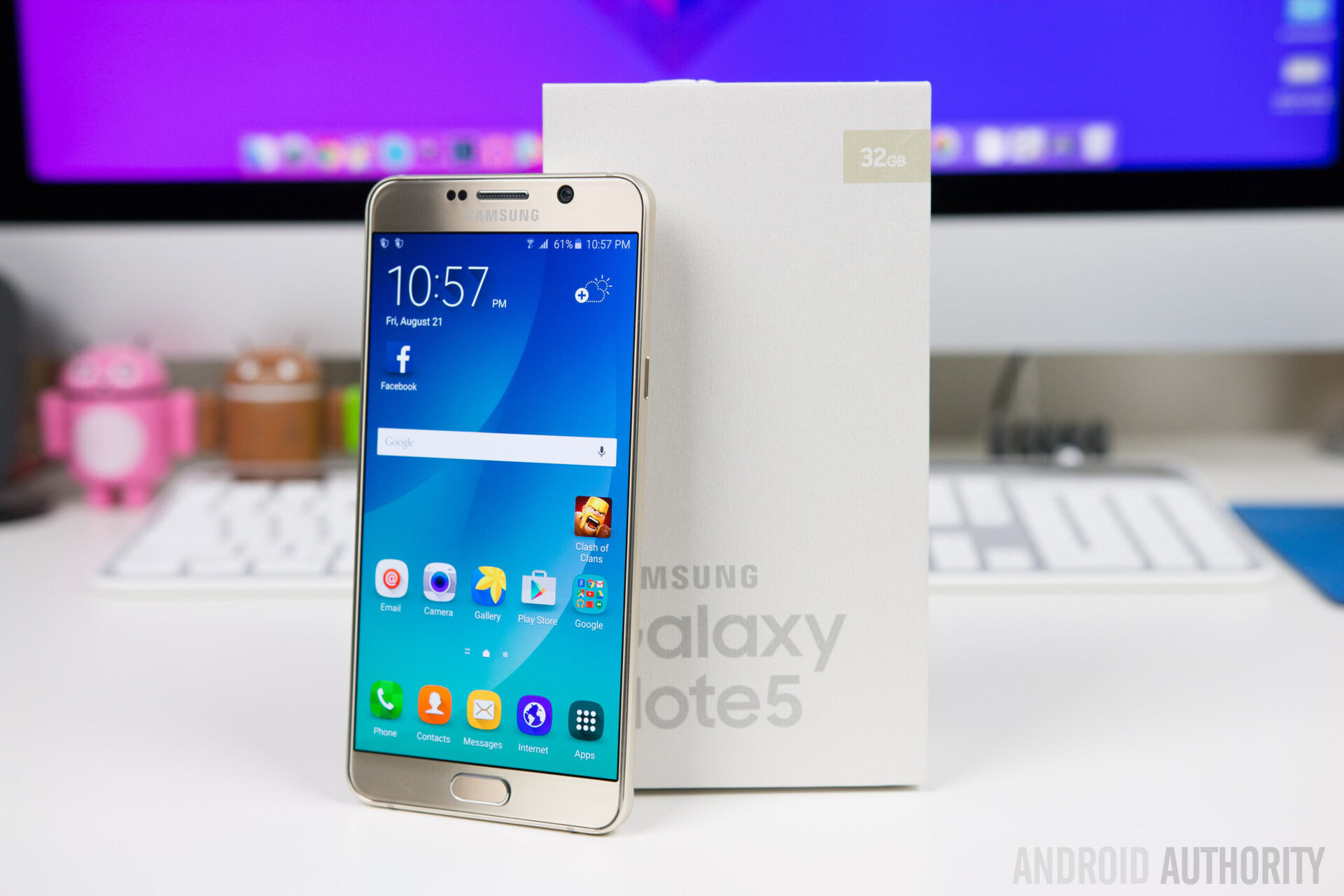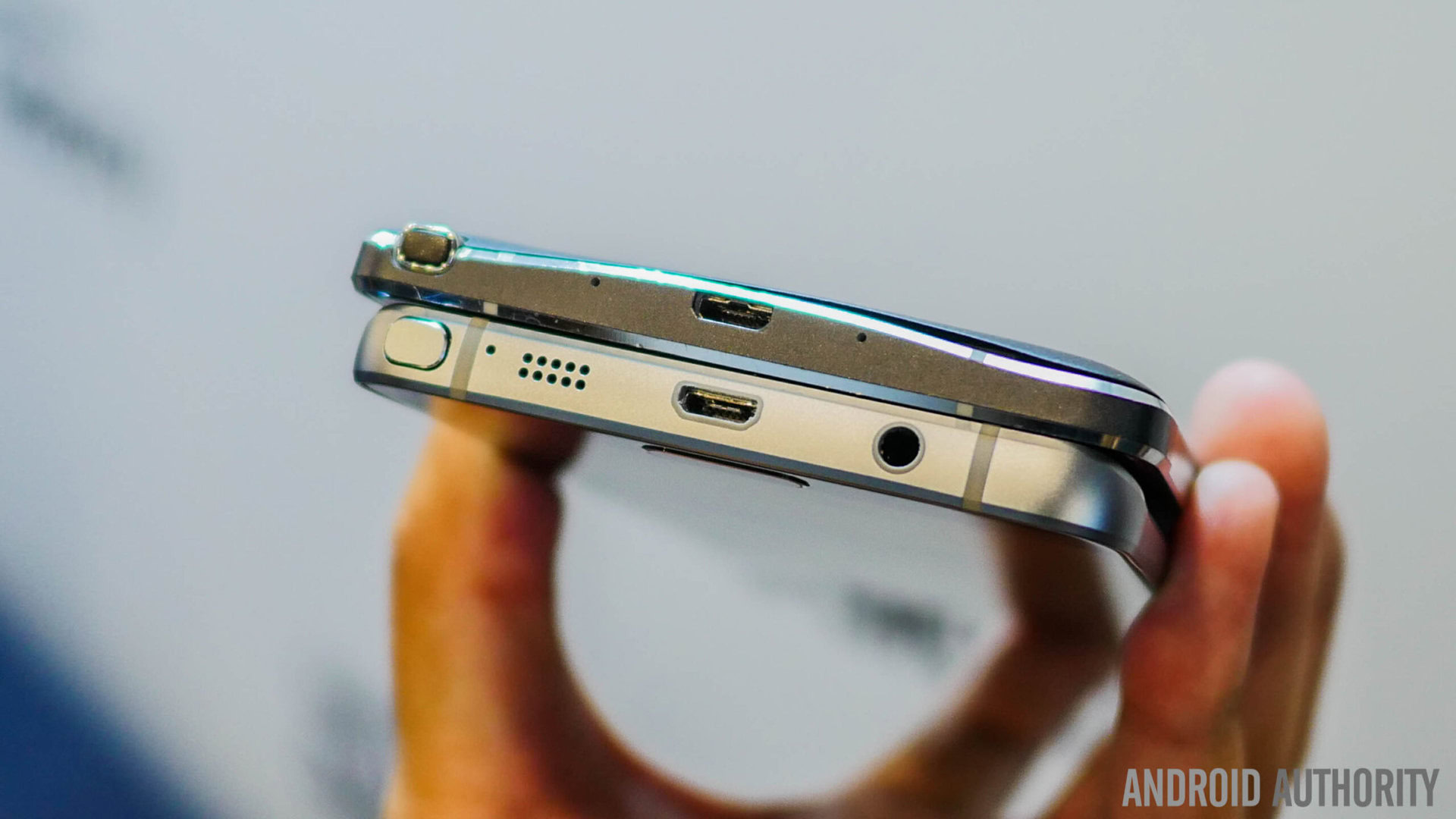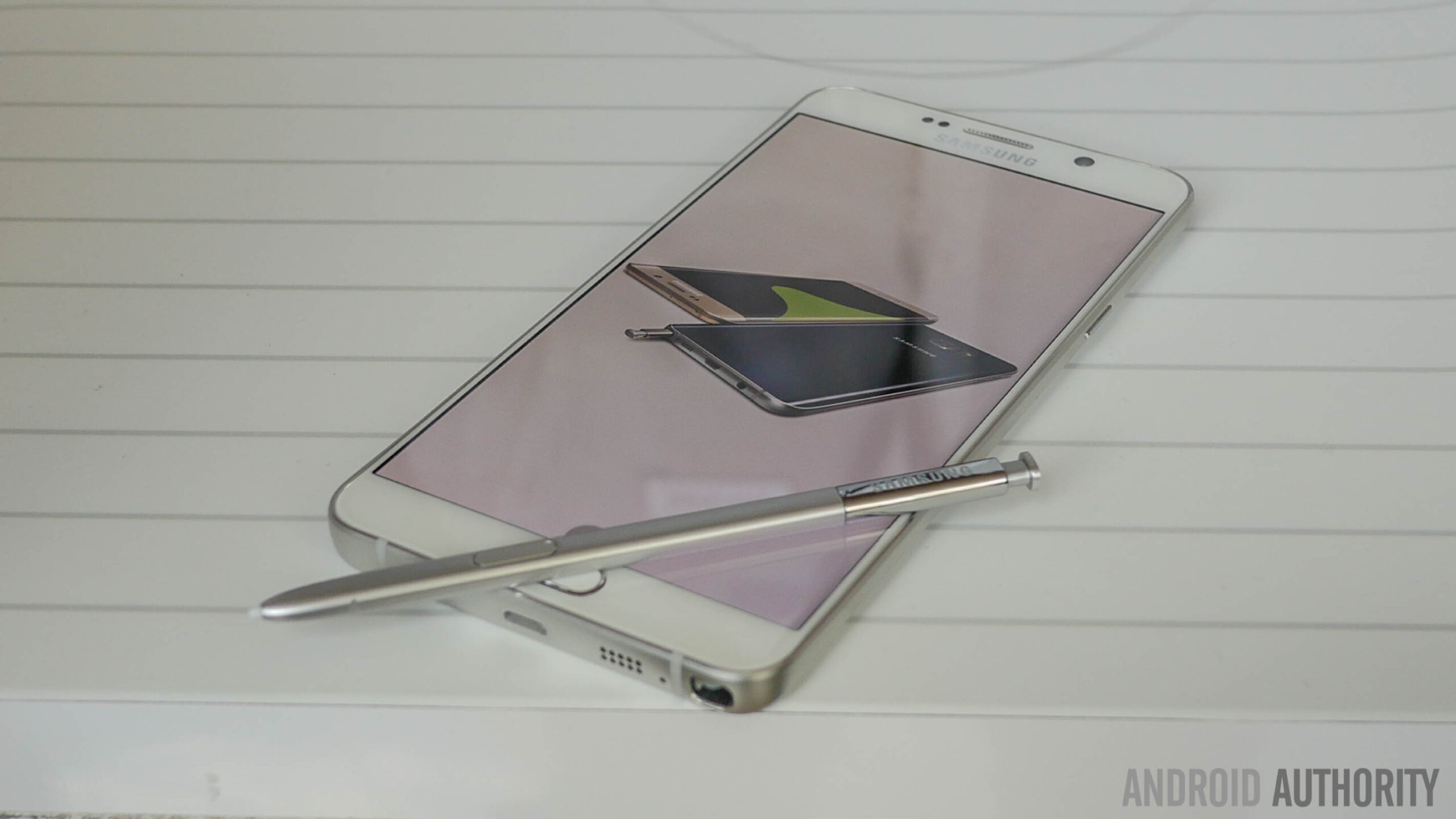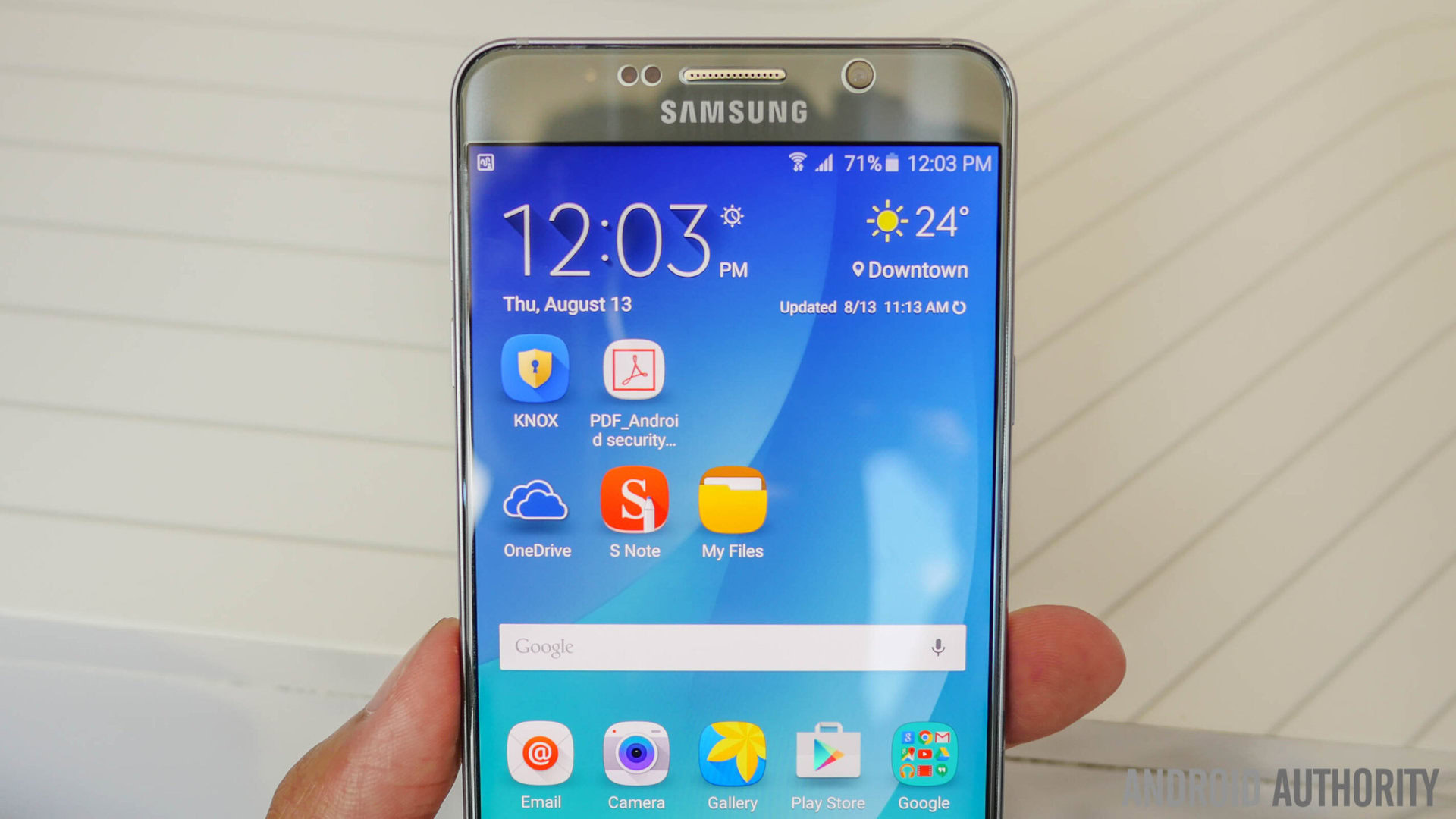Affiliate links on Android Authority may earn us a commission. Learn more.
PSA: Reverse insertion of the S-Pen will break the Galaxy Note 5's stylus detection sensor
August 24, 2015

Samsung’s Galaxy Note 5 is many good things. Stunningly beautiful, curiously curved (along the back), made of metal and graced with glass. It’s also host to some more controversial elements, including the removal of microSD, the IR blaster, and a user replaceable battery. One solid staple however, is the S-Pen, the Wacom-powered pointing device that gave birth to the phablet genre and gives the device its’ namesake. The Note 5 saw the introduction of a new, patented, spring-loaded eject mechanism.
One of the staff members at Android Police has discovered a major flaw with the Note 5 and the S-Pen, though this will not occur for anyone who uses the device correctly. The problem, it seems, is that if you insert the S-Pen backwards into the silo used to house it, the phone will no longer be able to detect when the pen has been inserted or removed. This basically means that no sound or vibration will occur, and presumably (though not mentioned) and relevant software-related action that the device is set to trigger upon removal.

The problem specifically originates from the fact that the S-Pen itself can be inserted in either direction without any resistance to prevent the user from doing such. This is markedly different from the previous four Note incarnations which all were designed such that if you tried to insert the stylus “eraser first” the more bulbous end would only go so far before meeting resistance. David Ruddock, who made the report and subsequent video, actually demonstrates this, and the difference is quite obvious.
For anyone who uses the device correctly, this is a total non-issue.
Here’s the video for you to consider the problem at hand:
Note that much of the video is actually spent with David trying to remove the S-Pen from the Note 5 itself, something that he indicates -via annotations- was actually not possible to do; the device is still broken at the time of this post going live. He does mention having tried this several times however, thus initially it would appear it was possible to eventually remove the S-Pen, though the point was raised that whatever mechanism is used to detect the removal was damaged the first time it happened.
Given the propensity for the meme-adoring members of the internet to attach “-gate” or “-ghazi” to any and every kind of issue possible -regardless of how distasteful such might be- it will likely follow that Samsung will quickly be accused of “Pengate” or “Penghazi” and perhaps rightly so. Still, let’s make one thing clear: for anyone that correctly operates the device and stows the S-Pen as it is intended, this problem will seemingly never occur.
With that said, as the video makes light of, the problem will occur sooner-or-later for someone. Small children, for example, or even adults that become distracted, might hastily insert the stylus into the device, and due to the fact there is no resistance, it will indeed slide in.
What does this mean

Without a doubt, this problem has the potential to be a very big one for Samsung, at least from a PR perspective. Irrespective of what is necessary to replicate it, the fact that the issue is so easy to reproduce, and so fundamentally problematic means that at the very least, an immediate change to the design of either the phone, or the S-Pen is required.
This might mean something as simple as adding a tiny tab or protrusion onto the tip of the stylus, or it might mean modification of the entire patented part of pen chamber. It might mean a recall, or a free repair, or something different altogether.
The idea that Samsung has presumably tested this device through all kinds of permutations and possibilities prior to manufacturing calls into question just how something this easy to do was missed, and all the more so given that the previous models didn’t allow the user to do it.
Some will be quick to accuse Samsung of Pengate or Penghazi despite how the vast majority of users will never even know it exists.
The potential problem at large
Perhaps in a larger reaching scope however, this issue also brings into question just how durable the actual spring-loaded eject mechanism is in-and-of-itself, as well as the very sensor used to detect the S-Pen. What happens when of it the part gets bent or worn out?. Likewise, even if the spring itself doesn’t break, its possible that the sensor might eventually and thus even if the device is correctly used, the long term durability might still be an issue.
It may follow that, in the coming days or weeks as this story presumably becomes a wider-spread concern, someone will take apart the unit piece by piece, and investigate exactly where the sensor is, and what is actually going on.
Wait and see

Android Police has indicated that it has reached out to Samsung for an official reply on the matter. We will make sure to update this post when any additional news breaks, or if/when Samsung itself makes an official press announcement.
What’s your reaction to this “Pengate” problem? Should the user be blamed 100%, or should Samsung bear the brunt of the responsibility for having made incorrect insertion so effortless? Leave us your thoughts below, as well as what kinds of solutions might be able to solve the potential problem.